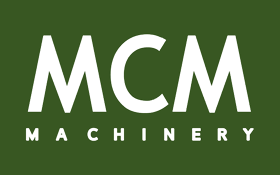- No product in the cart.
Water damage is likely one of the most common and damaging problems a houseowner can face. Whether it’s caused by a burst pipe, heavy rainfall, or a leaking roof, water damage can quickly escalate into a pricey and irritating situation. Proper water damage restoration is essential to forestall additional deterioration, mold development, and structural issues. This guide will walk you through the essentials of water damage restoration and what every houseowner must know.
Understanding Water Damage
Water damage occurs when extra water begins to pool in areas where it shouldn’t be. This moisture can seep into supplies like wood, drywall, and carpets, causing them to deteriorate over time. The longer water sits, the more damage it can cause, which is why swift motion is crucial.
Water damage is categorized into three types:
1. Class 1 (Clean Water): This comes from clean sources similar to broken water provide lines, overflowing sinks, or rainwater. Though it is initially safe, if left untreated, it can deteriorate into more severe categories.
2. Category 2 (Gray Water): This is slightly contaminated water that will come from home equipment like washing machines or dishwashers. It may well pose some health risks if ingested or touched and also can lead to significant damage.
3. Class 3 (Black Water): This highly contaminated water can come from sources resembling sewage backups or floodwaters. It poses severe health risks and requires specialised equipment and safety precautions for proper removal.
Steps in Water Damage Restoration
When water damage happens, time is of the essence. Right here’s a top level view of the key steps in water damage restoration:
1. Assess the Situation
Step one in any water damage situation is to evaluate the extent of the damage. This typically includes checking how far the water has spread, what supplies are affected, and figuring out the source of the water. It’s necessary to determine whether the water is clean, grey, or black to ensure the fitting approach is taken for removal.
Professional water damage restoration corporations use moisture meters and infrared cameras to detect hidden moisture, guaranteeing that even areas that appear dry on the surface are properly assessed.
2. Stop the Source of Water
Once the assessment is completed, it’s crucial to stop the source of the water. Whether or not it’s shutting off the main water valve, repairing a pipe, or addressing roof leaks, stopping further water from coming into the affected space is a critical step. Without halting the source, any further efforts in restoration will be futile.
3. Water Extraction
After the water source is contained, the subsequent step is to remove standing water from the property. This process could contain the use of high-powered pumps, vacuums, and different equipment to quickly extract water from carpets, flooring, and different materials. Time is a key factor; the earlier water is removed, the less damage will occur.
4. Drying and Dehumidification
As soon as the surplus water is removed, the next step is to dry out the affected areas. Drying entails the usage of industrial-grade air movers and dehumidifiers to remove moisture from the air and prevent additional damage like mold growth. This process could take a number of days, depending on the extent of the water damage.
It’s vital to ensure that hidden moisture, equivalent to behind partitions or under floors, is properly addressed. Any moisture left behind can lead to mold progress and further structural damage, which is why professional equipment and experience are sometimes necessary.
5. Cleaning and Sanitizing
Water damage can introduce harmful micro organism and contaminants, particularly in the case of gray or black water. Once the world is dry, cleaning and sanitizing are crucial to make sure the space is safe for occupants. This step often contains the removal of damaged supplies, corresponding to carpets or drywall, and utilizing specialized cleaners and disinfectants to sanitize the area.
Professional restoration corporations have the proper chemical compounds and cleaning methods to eradicate contaminants and odors that may linger after water damage.
6. Restoration and Repair
The final step in the water damage restoration process is restoring the property to its pre-damaged condition. This may involve minor repairs like changing drywall or repainting, or more in depth reconstruction in extreme cases. The goal is to make the affected areas look as though the water damage by no means happened.
Restoration could be a prolonged process, especially if the damage was extensive, however it’s essential to make sure the home is safe, structurally sound, and freed from mold or different hazards.
Stopping Future Water Damage
Preventing future water damage is just as essential as addressing the present situation. Listed below are just a few suggestions to assist reduce the risk of water damage in your home:
– Inspect Plumbing Frequently: Look for leaks, drips, and signs of wear in your pipes and water-primarily based appliances.
– Keep Gutters and Downspouts: Guarantee your gutters and downspouts are clean and directing water away out of your foundation.
– Monitor for Signs of Roof Leaks: Often inspect your roof for lacking shingles or other signs of potential leaks.
– Use a Sump Pump: In flood-prone areas, consider putting in a sump pump to remove excess water from your basement.
Conclusion
Water damage could be a devastating problem for residenceowners, however with quick motion and the proper knowledge, it will be managed effectively. Understanding the process of water damage restoration and knowing when to call in professionals can save you time, cash, and stress in the long run. By being proactive in stopping water damage and understanding the steps concerned in restoration, houseowners can protect their properties from the possibly disastrous effects of water.
If you liked this article and you simply would like to receive more info regarding emergency water removal services austin texas nicely visit our web-page.

